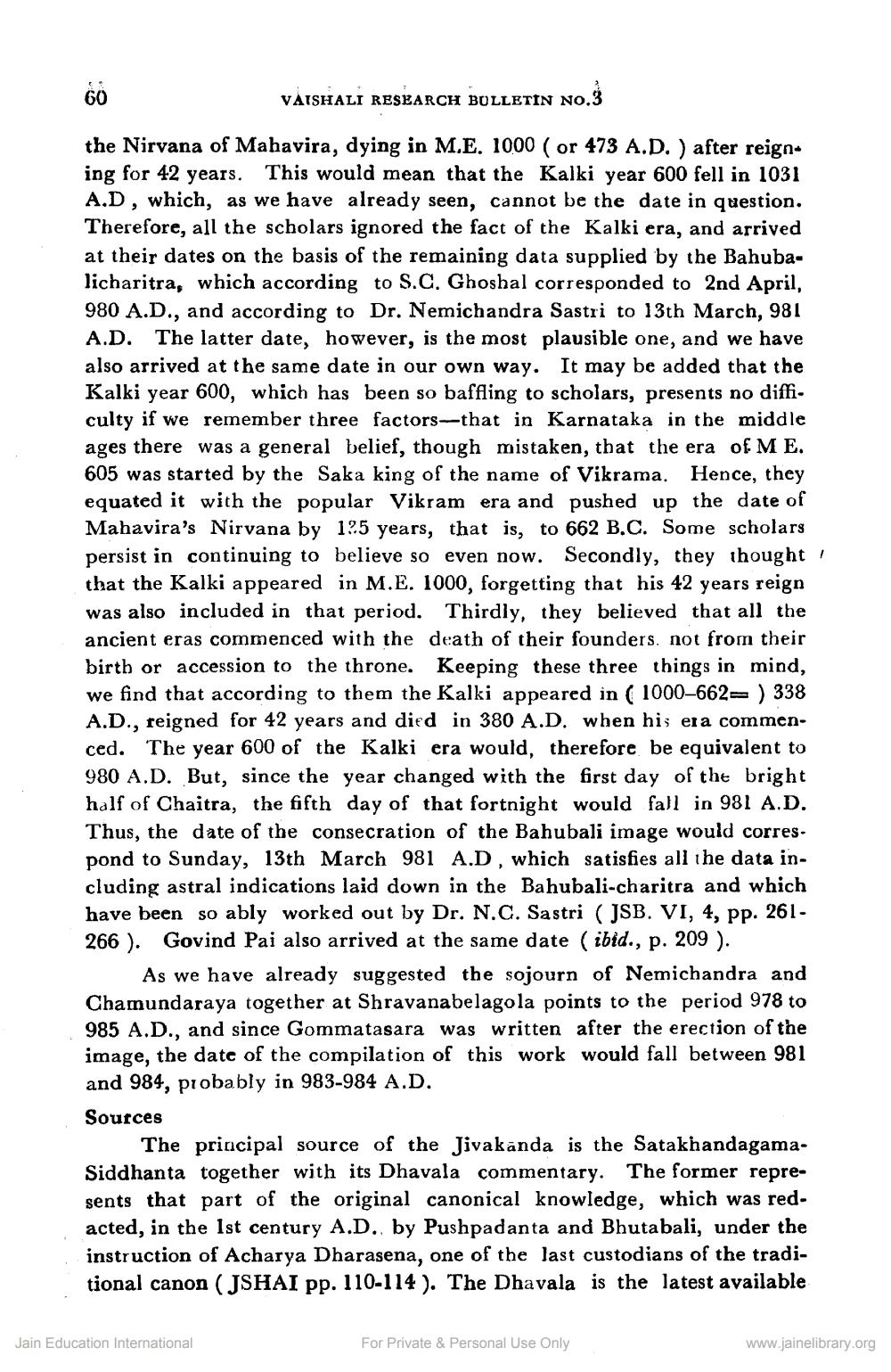________________
60
the Nirvana of Mahavira, dying in M.E. 1000 (or 473 A.D.) after reign. ing for 42 years. This would mean that the Kalki year 600 fell in 1031 A.D, which, as we have already seen, cannot be the date in question. Therefore, all the scholars ignored the fact of the Kalki era, and arrived at their dates on the basis of the remaining data supplied by the Bahubalicharitra, which according to S.C. Ghoshal corresponded to 2nd April, 980 A.D., and according to Dr. Nemichandra Sastri to 13th March, 981 A.D. The latter date, however, is the most plausible one, and we have also arrived at the same date in our own way. It may be added that the Kalki year 600, which has been so baffling to scholars, presents no difficulty if we remember three factors-that in Karnataka in the middle ages there was a general belief, though mistaken, that the era of M E. 605 was started by the Saka king of the name of Vikrama. Hence, they equated it with the popular Vikram era and pushed up the date of Mahavira's Nirvana by 125 years, that is, to 662 B.C. Some scholars persist in continuing to believe so even now. Secondly, they thought that the Kalki appeared in M.E. 1000, forgetting that his 42 years reign was also included in that period. Thirdly, they believed that all the ancient eras commenced with the death of their founders. not from their birth or accession to the throne. Keeping these three things in mind, we find that according to them the Kalki appeared in ( 1000-662=) 338 A.D., reigned for 42 years and died in 380 A.D. when his era commenced. The year 600 of the Kalki era would, therefore be equivalent to 980 A.D. But, since the year changed with the first day of the bright half of Chaitra, the fifth day of that fortnight would fall in 981 A.D. Thus, the date of the consecration of the Bahubali image would correspond to Sunday, 13th March 981 A.D, which satisfies all the data including astral indications laid down in the Bahubali-charitra and which have been so ably worked out by Dr. N.C. Sastri (JSB. VI, 4, pp. 261266). Govind Pai also arrived at the same date (ibid., p. 209).
VAISHALI RESEARCH BULLETIN NO.3
As we have already suggested the sojourn of Nemichandra and Chamundaraya together at Shravanabelagola points to the period 978 to 985 A.D., and since Gommatasara was written after the erection of the image, the date of the compilation of this work would fall between 981 and 984, probably in 983-984 A.D.
Sources
The principal source of the Jivakanda is the SatakhandagamaSiddhanta together with its Dhavala commentary. The former represents that part of the original canonical knowledge, which was redacted, in the 1st century A.D.. by Pushpadanta and Bhutabali, under the instruction of Acharya Dharasena, one of the last custodians of the traditional canon (JSHAI pp. 110-114). The Dhavala is the latest available
Jain Education International
For Private & Personal Use Only
www.jainelibrary.org




